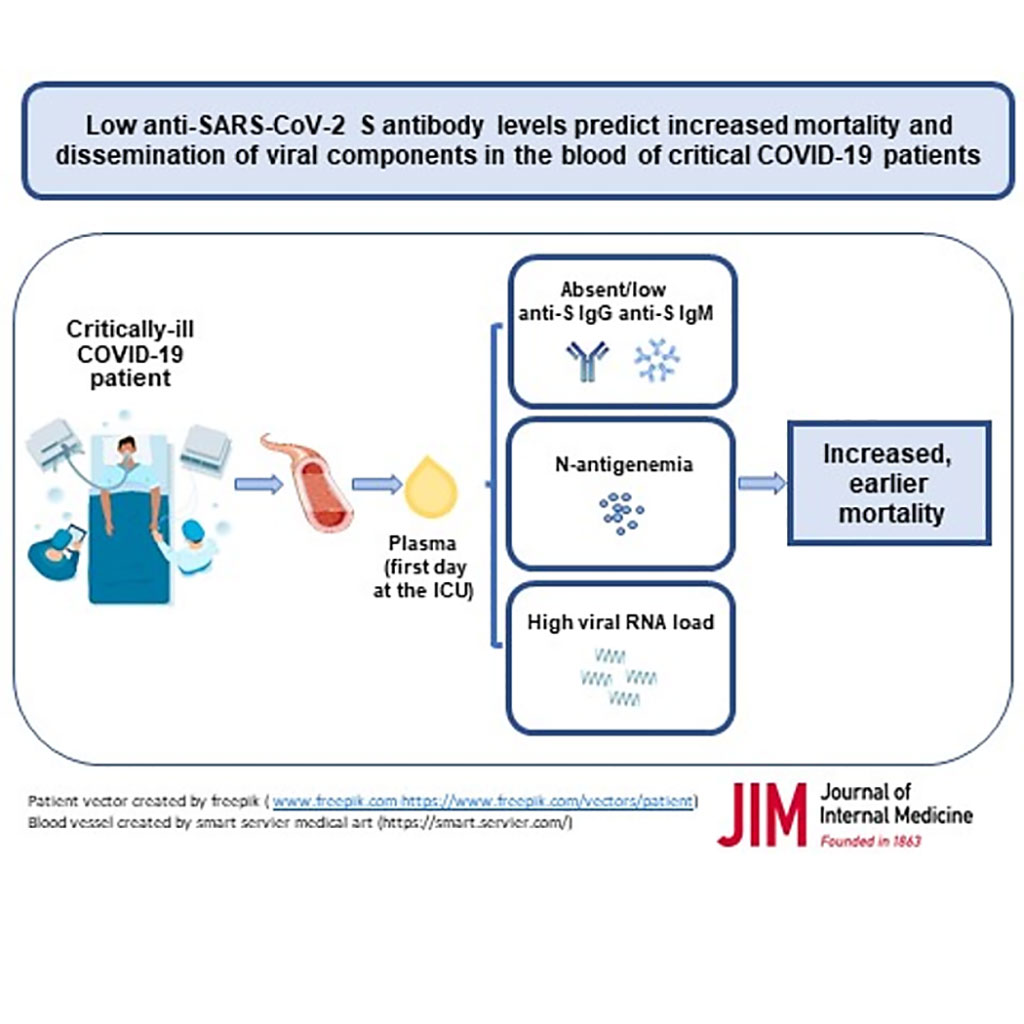Low Anti-SARS-CoV-2 S Antibody Levels Predict Increased Mortality
By LabMedica International staff writers
Posted on 20 Oct 2021
Anti-SARS-CoV-2 spike (S) antibodies bind to multiple domains in this viral protein. Host antibodies directed at the receptor binding domain (RBD) mediate inhibition of viral attachment to cell surface receptors.Posted on 20 Oct 2021
Anti-S antibodies could play a role in reducing viral replication during an ongoing acute infection by interfering with virus entry into a cell. Interestingly, whether levels of host-produced endogenous antibodies against the S protein could influence mortality risk in severe COVID-19 has not been sufficiently studied.

Image: Low anti-SARS-CoV-2 S antibody levels predict increased mortality and dissemination of viral components in the blood of critical COVID-19 patients (Photo courtesy of Instituto de Salud Carlos III)
A large team of medical scientists associated with the Instituto de Salud Carlos III (Madrid, Spain) recruited 92 critically ill adult patients with a positive nasopharyngeal swab polymerase chain reaction (PCR) test for SARS-CoV-2 from 16th March to 15th April 2020, during the first pandemic wave from several hospitals. They obtained EDTA plasma in the first 24 hours following admission to the Intensive Care Unit (ICU).
The scientists quantified SARS-CoV-2 RNA in plasma using the Bio-Rad SARS-CoV-2 droplet digital PCR kit (Bio-Rad, Hercules, CA, USA). The team developed a specific immunoassay to quantify anti-SARS-CoV-2 S IgG and IgM antibodies in plasma and evaluated the presence/absence of N antigen of SARS-CoV-2 in plasma using the Panbio COVID-19 Ag Rapid Test Device (Abbott, Chicago, IL, USA).
The investigators reported that the frequency of N-antigenaemia was >2.5-fold higher in absence of antibodies. Ten patients (of the total cohort) had no detectable levels in the plasma of anti-SARS-CoV-2 S IgG, and 13 had no detectable levels of anti-SARS-CoV-2 S IgM. Patients who died showed more often absence/lower levels of anti-SARS-CoV-2 S IgM and IgG than those who survived by day 30 following ICU admission. In contrast to that observed for antibodies, non-survivors showed more frequently the presence of antigenaemia along with higher viral RNA loads in plasma. Antibodies correlated inversely with viral RNA-load in plasma, representing a protective factor against mortality. Viral RNA-load in plasma and N-antigenaemia predicted increased mortality.
Jesús F. Bermejo-Martin, MD, PhD, a Clinical Immunologist and a co-senior author of the study, said, “Our findings support that treatment with exogenous antibodies in COVID-19 should be personalized, reserving this therapy for those patients with absent or low endogenous antibodies levels.”
The authors concluded that low anti-SARS-CoV-2 S antibody levels predict mortality in critical COVID-19 and their findings support that these antibodies contribute to prevent systemic dissemination of SARS-CoV-2. The study was published on October 5, 2021 in the Journal of Internal Medicine.
Related Links:
Instituto de Salud Carlos III
Bio-Rad
Abbott














